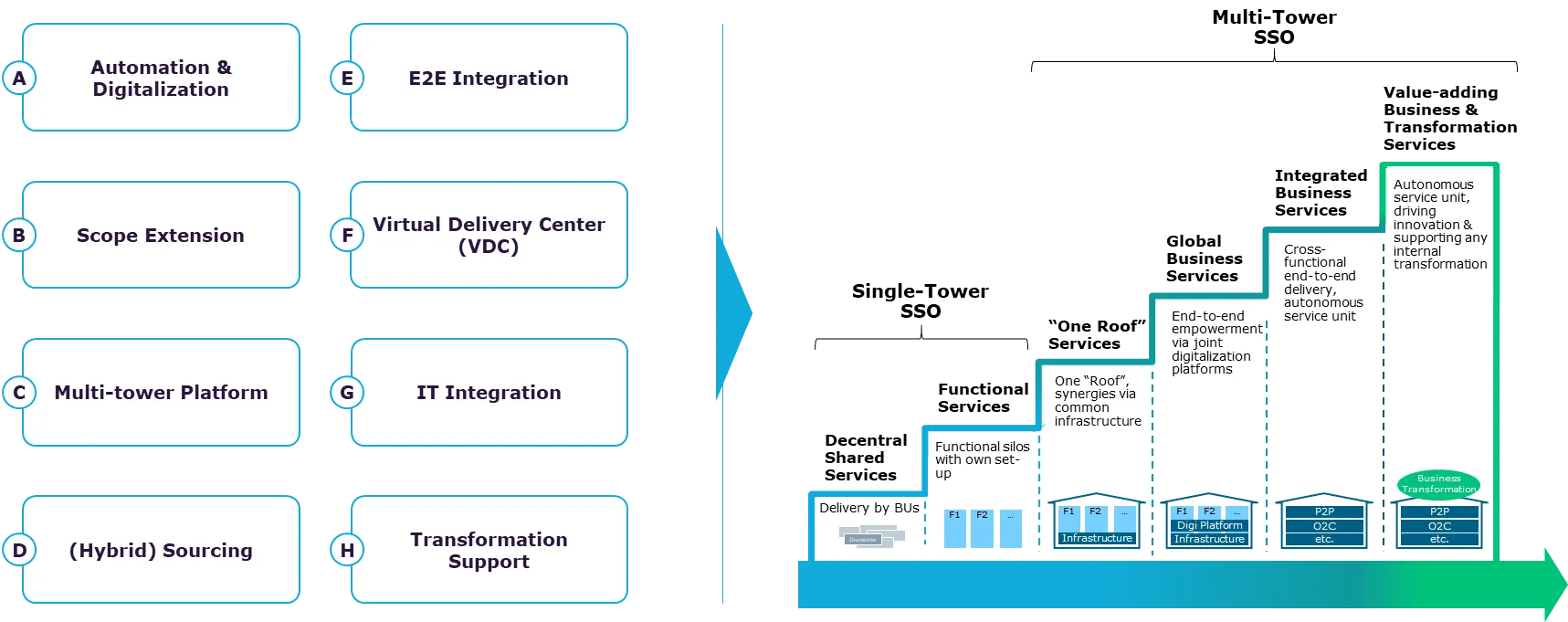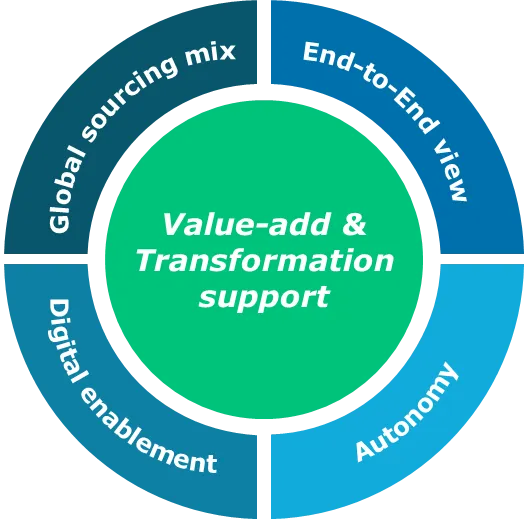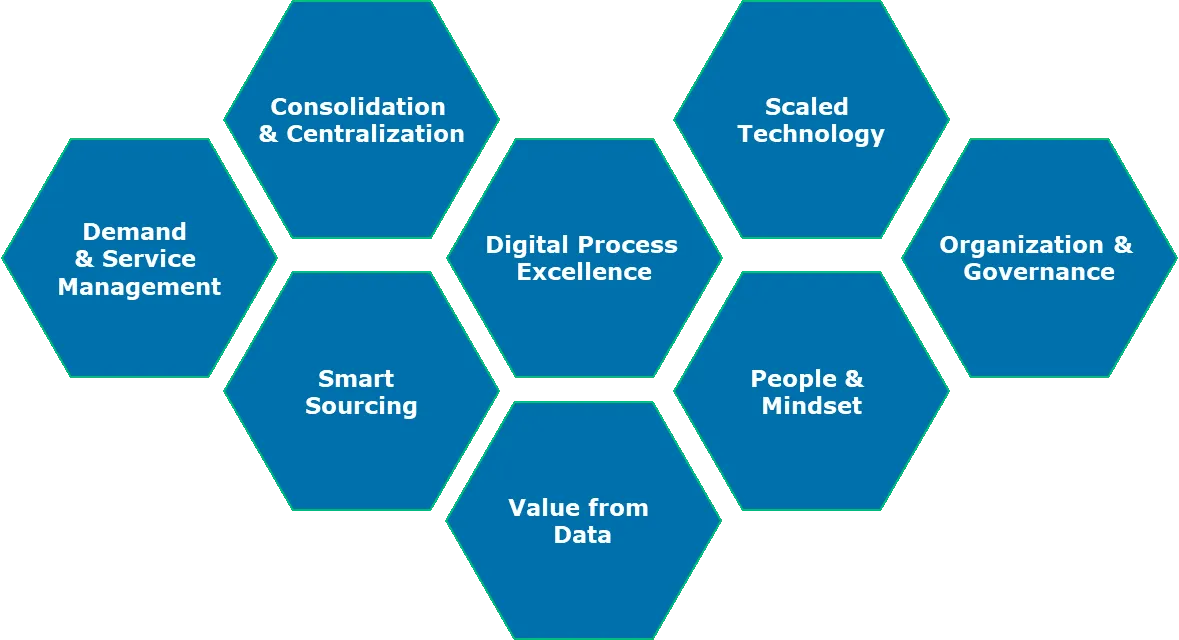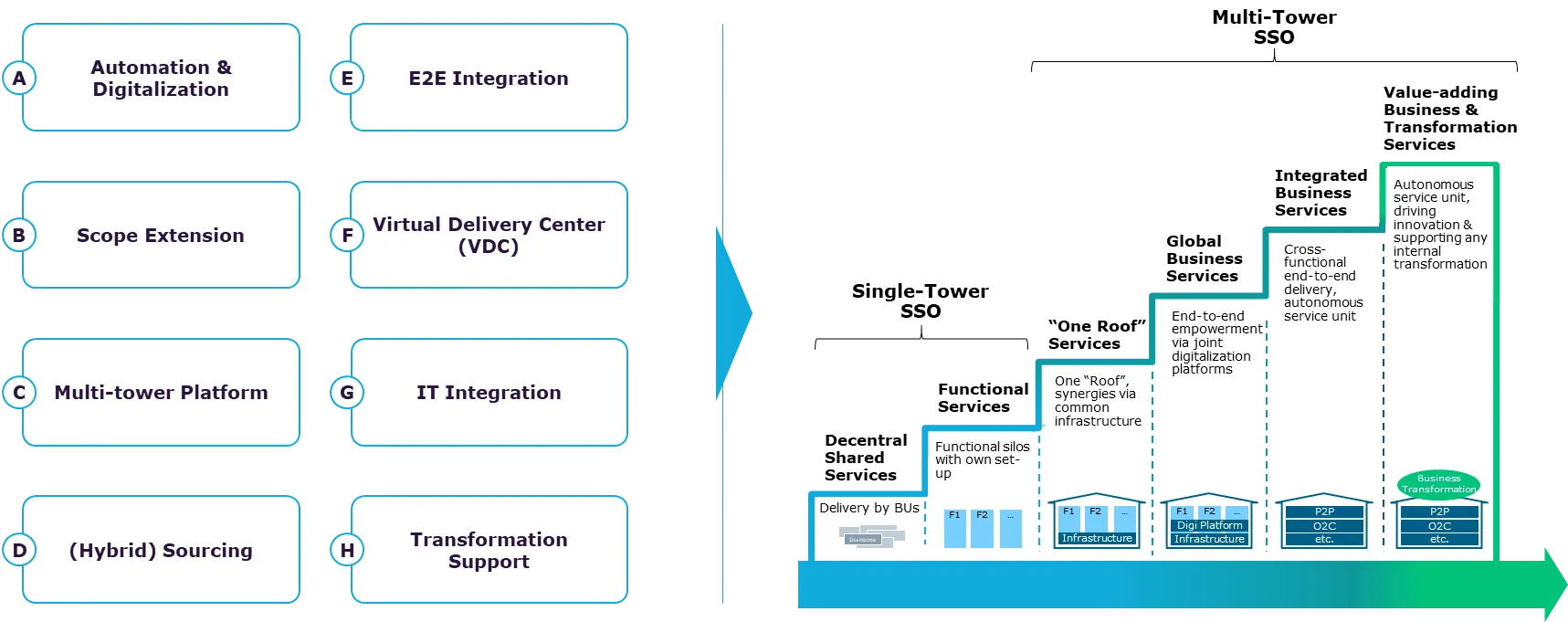Value-adding business and transformation services take shared services to the next level
Blog: Capgemini CTO Blog
A need for action
Shared services are typically already an important element of CxOs’ agendas, but today’s economic environment makes it crucial to prioritize them even more. From logistics, to insurance, to manufacturing and retail – in all major industries, increasing global competition, partially paired with regulation, puts companies under pressure. More than ever, businesses need to act and tackle the potentials of an efficient organization, streamlined processes, and enhanced service delivery, leveraging the infinite but still-growing number of digital solutions. Efficiency and quality, driven from back-office to core processes and backed by clear E2E ownership, can boost margins.
Shared service organizations as a solution
SSOs (shared-service organizations) are the key to realize those potentials for corporates across business units and regions. While previously, SSOs were often limited to function-oriented and transactional service-providers, SSOs have continuously developed and professionalized. The extension of SSO scope to “core-value” functions, such as purchasing or sales, the integration into globally standardized end-to-end processes, or the intensified use of automation solutions – these trends show that SSOs are moving ahead (Figure 1 depicts current shared service trends and maturity levels).

Taking SSOs to the next level: value-adding business and transformation services
Capgemini Invent takes SSOs to the next maturity level, positioning them as the company’s driver and enabler of continuous innovation and business transformation. We define the next level of SSOs as value-adding business and transformation services (VBTS) that are characterized by four major pillars (Figure 2 depicts the main building blocks of VBTS):
- Global sourcing mix: A global delivery network with hybrid sourcing (multi-tower captive shared services and outsourcing) allows ideal service coverage, finding the optimal balance between cost optimization and customer satisfaction.
- End-to-end view: A full SSO integration into global, “horizontal” end-to-end processes (e.g., P2P, O2C, A2R, etc.), including standardized governing metrics and data analytics enables harmonized service-level differentiation and constantly improves SSO delivery performance through clear SSO-responsibilities.
- Digital enablement: The SSO constantly strives for the optimal combination of human and virtual workforce, using diverse tools such as RPA or AI, enabling seamless process delivery on a global scale.
- Autonomy: The positioning of the SSO as an equal and autonomous business partner within the company (and beyond) under one global head of E2E services allows value-adding services, creates flexibility and offers further scaling potential (e.g., third-party service provision).
In comparison to the core operations departments that often simply have other priorities, VBTS benefit from smart specialization, a growing integrated process ownership, and platform-based as well as digitized infrastructure. VBTS serve as data hubs, being the interaction engine between customers, employees, and suppliers. As a result, they foster insights-driven user centricity and engagement. Examples for the value-add, beyond-pure transactions are the piloting of new digital solutions, Group-wide implementation support (e.g., chatbots, process mining, etc.), the operation of innovation hubs for product and service development, as well as offering improved post-merger integration services. VBTS can drive the evolution of a whole company, bringing it ahead of the competition.

Efficiency levers of VBTS
VBTS unveils enormous efficiency potentials while supporting the core businesses’ sustainable success. It leverages various SSO target operating model optimization drivers, such as smart sourcing, scaled technology, streamlined governance, and professionalized demand and service management. Taking advantage of these potentials, companies can reduce run costs by up to 40% (Figure 3 depicts major VBTS efficiency levers).

Customized, pragmatic, and sustainable – The Capgemini SSO transformation approach
Our experience from existing and new contacts across all industries reveals that there is always room for measurable improvements. We tailor our approach to our clients’ individual SSO maturity level (see Figure 1) with the ambition to create the highest value for their business.
Keeping this in mind, we differentiate ourselves through three main principles:
- Target operating model sets the stage: A target operating model is the central element and steering framework of any SSO. We apply proven and innovative tools and methods, such as the guide-deliver-receive methodology, to ensure implementing an efficient target operating model.
- Insights-driven tools quantify potentials: We use diverse insights-driven and digital tools (such as cost discovery scan or process mining) in order to rapidly create transparency on optimization potentials based on client-specific data.
- Automation@scale optimizes efficiency: Digitalization plays a major role in today’s SSOs. We provide scalable automation solutions (e.g., leveraging RPA or chatbots) that perfectly meet client needs to ensure long-term success and efficiency.
Key take-aways:
- Shared services are the key for companies in all industries to substantially increase efficiency in a challenging economic environment.
- Various trends in the world of shared services, leveraging the potentials of digitalization, allow SSOs to mature.
- VBTS is the next SSO maturity level, combining a global sourcing ,ix, an end-to-end view, digital enablement and autonomy to become innovation drivers and business enablers.
- VBTS unveils run cost saving potentials up to 40%.
- The Capgemini approach for a transformation of SSOs toward VBTS is driven by TOM Excellence, insights-driven analysis, and automation@scale.
If you have any questions or want to discuss shared services in more detail, please do not hesitate to contact the authors, Tobias Unger, Jannis Kachel and Max Scheuermann.
